- WE MOVED !!!
-
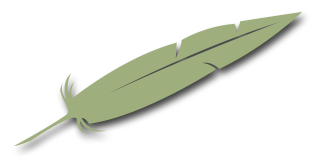 Professional Acupuncture & Physical Therapy1118 East Superior Street
Professional Acupuncture & Physical Therapy1118 East Superior Street
Duluth, MN 55802(218) 724-3400 Clinic Hours
Mon8:00 am - 4:30 pmTue1:45 pm - 4:30 pmWed8:00 am - 4:30 pmThu8:00 am - 4:30 pmFriCLOSED
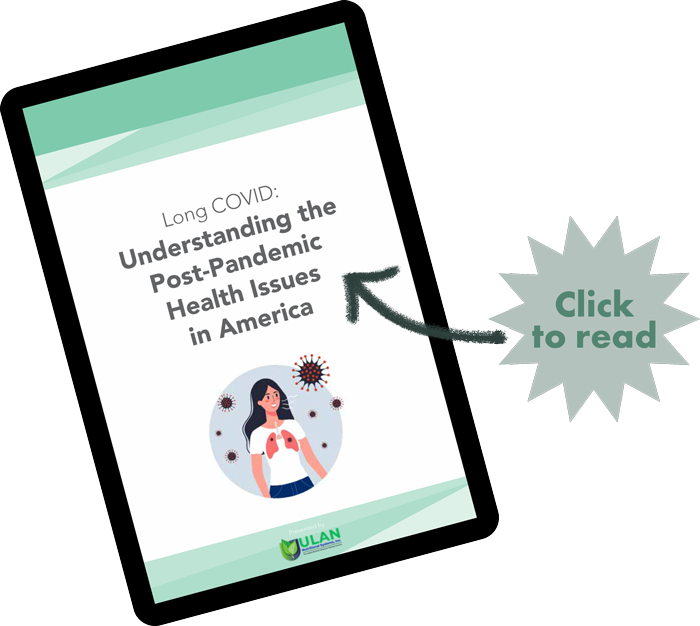
- Long Covid Booklet
Blog
Spice Up Your Medicine Cabinet!

Friday, June 10th is National Herb and Spice Day, a day to celebrate the diversity of flavors available to us through the powerful plant parts that have come to be known as herbs and spices. While this tradition is relatively recent in origin (first celebrated in 1999), the wonder of herbs and spices have been recognized throughout history, and not just for their culinary contributions. Former Holy Roman Emperor Charlemagne (742-814 AD) had 74 different herbs growing in his garden and was quoted as saying:
“Herbs are the friends of physicians and the praise of cooks”
In Europe, by the middle ages, herbs and spices were commonly used in both cooking and medicine. As far back as around 2700 BC in Ancient China, however, a historical work known as The Classic Herbal mentioned more than a hundred medicinal plants, including cinnamon. It has been said that advisors to the royal court in China during the 3rd century BC carried cloves in their mouth so their breath was fresh when they addressed the emperors. In the 5th Century AD, according to Chinese records, ginger was carried on long sea journeys to prevent scurvy, as well as to delight the taste buds.
Any student or practitioner of Chinese Medicine knows that Chinese food therapy (which includes many applications of medicinal herbs) was well documented in The Yellow Emperor’s Classic dating back to the Han Dynasty (206BC-220AD).
So, if your medicine cabinet is looking a little bare, spice it up! If you’ve got some of these common seasonings in your kitchen, you’ve actually got a pretty well stocked medicine cabinet!
Cinnamon:
One of the most ancient spices still in use, the bark (Rou Gui) of the Cassia tree benefits circulation, and warms the body to expel cold and alleviate pain. Cinnamon is known to help support the body’s yang energy to stop diarrhea and even help with wound healing.
Ginger:
Probably the most common seasoning in Chinese cooking, this root is used both fresh and dried. You may have the dried version in your cabinet as a powder. Dried ginger (gan jiang) is warming, aids in digestion, and boosts the qi for alleviating feelings of cold and fatigue.
Turmeric:
Turmeric (jiang huang) is a root from a flowering plant related to ginger. It strongly moves the blood to unblock stasis, helping to ease arthritic, menstrual, and chest pain and to support liver health.
Clove:
The penetrating aroma of clove (ding xiang) comes from the flower buds of a tree and when taken internally imparts a strong warming energy that boosts yang qi in the body. They can help with hiccups, vomiting, diarrhea and abdominal pain.
Pepper:
If you can’t find any of the other spices mentioned, you probably at least have this one on hand. Peppercorn (hu jiao) is the fruit of a flowering vine that warms the core of the body, descends rebellious qi and dissipates phlegm to help with abdominal pain, vomiting, congestion, and epilepsy.
Mint:
While many of these spices are considered warming. Mint leaves (bo he) are actually very strong in their ability to cool the body while promoting sweat and can ease symptoms of cold and flu, help with headaches and menstrual cramps.
Garlic:
In addition to scaring away vampires, this plant bulb (da suan) that is technically considered a vegetable (like an onion), is warm and dispersing. It is known for its ability to kill parasites, relieve toxicity to treat food poisoning, and can help clean the blood and reduce clotting.
Thyme:
Much more than a delicious pizza topping, this herb was used by ancient Greeks and Romans as a way to stimulate courage. The Chinese use these shrub leaves (bai li xiang) to tonify qi and warm the lungs. It has been used to treat cough and shortness of breath, and to strengthen immunity and digestion.
It’s good to know you’ve got some health resources right in your own spice cabinet, but it’s even better to know you’ve also got your local acupuncturist/herbalist on hand with even more tools to support your well-being. We’re here for you and look forward to seeing you at your next appointment!
Research Review: Acupuncture for Insomnia
 Nearly 30% of American adults struggle with chronic insomnia, and that percentage increases with age. Standard treatment includes sleeping pills and cognitive therapy. Cognitive therapy shows a lot of promise as an effective treatment and sleeping pills, though presenting some risks, can be helpful for the short-term. It is a condition, however, according to standard approaches, that can be treated, but unfortunately, not cured. And while many Americans don’t meet the criteria of a ‘chronic insomnia’ label, anyone who lacks proper sleep on a regular basis will eventually suffer physical, mental and emotional health consequences. Besides the obvious fatigue that comes along with many types of insomnia, there can be accompanying effects such as headaches, dizziness, and sore muscles as well as mood issues. One large study found that those with insomnia were five times more likely to suffer from depression than those who got adequate sleep. This is in addition to other associated effects on brain health, cardiovascular health, immunity and weight.
Nearly 30% of American adults struggle with chronic insomnia, and that percentage increases with age. Standard treatment includes sleeping pills and cognitive therapy. Cognitive therapy shows a lot of promise as an effective treatment and sleeping pills, though presenting some risks, can be helpful for the short-term. It is a condition, however, according to standard approaches, that can be treated, but unfortunately, not cured. And while many Americans don’t meet the criteria of a ‘chronic insomnia’ label, anyone who lacks proper sleep on a regular basis will eventually suffer physical, mental and emotional health consequences. Besides the obvious fatigue that comes along with many types of insomnia, there can be accompanying effects such as headaches, dizziness, and sore muscles as well as mood issues. One large study found that those with insomnia were five times more likely to suffer from depression than those who got adequate sleep. This is in addition to other associated effects on brain health, cardiovascular health, immunity and weight.
Acupuncturists typically always ask about quantity and quality of sleep no matter the initial complaint or reason for seeking treatment. This is because as holistic health practitioners, we recognize the enormous impact sleep has on the overall health experience. If there are any deficits when it comes to sleep, this will usually be part of the focus for treatment. In Traditional Chinese Medicine (TCM), night time is yin time, a time for rest, healing and recovery. It needs to be in balance with yang time (daytime) activity levels. This harmony of yin and yang is central to the TCM understanding of health.
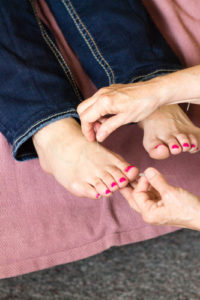 Acupuncture takes an individualized approach to insomnia, as everyone is different, and there can be many reasons why someone is out of balance. In addition to external factors such as trauma or stress, a person’s internal environment will be looked at. A pattern assessment is done to evaluate both the abundance and flow of blood and energy (qi) in the body, excess hot or cold type disorders and any organ imbalances. But is it effective?
Acupuncture takes an individualized approach to insomnia, as everyone is different, and there can be many reasons why someone is out of balance. In addition to external factors such as trauma or stress, a person’s internal environment will be looked at. A pattern assessment is done to evaluate both the abundance and flow of blood and energy (qi) in the body, excess hot or cold type disorders and any organ imbalances. But is it effective?
In a review of random controlled trials evaluating the effectiveness of acupuncture for insomnia, acupuncture was found superior to medications in its ability to increase sleep duration for >3 hours. Also, acupuncture plus medications showed better effect than medications alone on total sleep duration. And finally, acupuncture plus herbs was significantly better than herbs alone on increase of sleep rates. Worthwhile to note that there were no serious adverse effects of acupuncture observed in any of the trials.
According to Western physiology, acupuncture affects our ability to sleep by triggering the release of our sleep hormone: melatonin, and various other mechanisms still being studied, such as the activation of specific brain pathways involved in sensory processing . Acupuncture is also known to stimulate the vagus nerve, which helps shift the whole body into a more relaxed state. When the body goes into this relaxed state, not only does sleep quality improve, the body also turns on the immune and repair systems, cutting down oxidative stress and inflammation in the body.
Given the interrelationship of sleep and overall health, if all acupuncture did was improve sleep, it would still merit recognition as a valuable health system. But Acupuncture is prescribed for so much more! Call us today ay (218) 724-3400 to set up a sleep and overall health improving series of treatments and start feeling the benefits right away!
5 Benefits of Acupuncture

Acupuncture is part of Traditional Chinese Medicine (TCM) and is practiced in many different forms which include herbal remedies, cupping, and massage, which have all been used for thousands of years. The basis of TCM is the idea of qi, the body’s vital energy.
TCM treatments promote the movement of qi throughout the body in order to help bring balance back to the body. The goal of acupuncture is to correct this imbalance which can cause a variety of ailments and conditions that you may currently have.
Acupuncture uses very thin needles (which have been compared to being as small as cat whiskers) that stimulate pressure points and other areas of your body. It stimulates qi by placing needles in specific spots, often along meridians. Meridians are the channels that qi travels in the body.
Acupuncture can help with many health conditions, including:
- Arthritis
- Chronic pain, including joint pain
- Depression
- Headaches and migraines
- Trouble sleeping and insomnia
- Nausea and digestive trouble
- Back pain and sciatica
- Stress and anxiety
- Tinnitus (ringing ears)
- Weight loss
Below are the top five ways that acupuncture can help
- Relieves Pain
Acupuncture can help alleviate many types of pain that may range from headaches and migraines to neck and back pain. These studies have shown its effectiveness in treating lower back pain, migraines, tension headaches, and knee pain. Acupuncture works differently for everybody. For some, a single treatment can alleviate symptoms for several months while others need a more routine treatment schedule. - Improved Sleep
Another thing that Acupuncture can help improve is sleep and insomnia. Scientists believe that acupuncture increases the production of brain chemicals that promote relaxation, thus allowing for better sleep. - Uplift Mood
Acupuncture can help with improving mood, including helping with depression, stress, and anxiety. The needles from acupuncture treatment release endorphins in the body. Endorphins are hormones that provide a boost in mood, encouraging happiness and relaxation. - Help the Heart
Acupuncture is also good for your heart due to the relaxation and stress reduction that one achieves from the treatments, which are also known to reduce blood pressure. Stress and high blood pressure are commonly related to heart attacks and heart disease. - Support the Immune System
Research has shown that acupuncture can boost immune system function. The placement of acupuncture needles can release immune-boosting cytokines. Cytokines are messenger cells that regulate the body’s immune response. By triggering the immune system, acupuncture can help fight infections or illnesses like colds and the flu.
If you deal with any of the above symptoms or think that acupuncture may be right for you- schedule an appointment with Heidi in Duluth! We’d be happy to support you in achieving your health care goals!
Research Review: Acupuncture for Back Pain
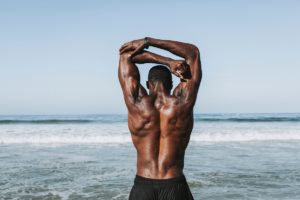 Back pain is one of the most expensive and exhausting ailments of our time. It’s the 6th most costly condition in the United States, costing Americans at least 50 billion in health care costs each year (let alone the cost of missed work due to disability). It is the third most common reason for a visit to the doctors office (behind skin disorders and osteo-arthritis joint issues). For Acupuncturists, it is the #1 reason people show up at their door.
Back pain is one of the most expensive and exhausting ailments of our time. It’s the 6th most costly condition in the United States, costing Americans at least 50 billion in health care costs each year (let alone the cost of missed work due to disability). It is the third most common reason for a visit to the doctors office (behind skin disorders and osteo-arthritis joint issues). For Acupuncturists, it is the #1 reason people show up at their door.
So does it really work? For those that turn to acupuncture, they can rest assured they are increasing their odds of finding relief. Acupuncture has been found to be effective for chronic pain, including low back pain. Not only is acupuncture more clinically effective than no treatment at short-term follow-ups that looked at measures of pain relief and functional improvement acupuncture was actually found to be substantially better than standard care in a meta-analysis of randomized controlled trials that included around 20,000 patients with chronic musculoskeletal pain.
Acupuncture is also safe. In a cumulative review of more than 1 million acupuncture treatments, the risk of a serious adverse event with acupuncture was estimated to be 0.05 per 10,000 treatments and 0.55 per 10,000 individual patients. Most common side effects were minor, and included bleeding at the needle site and localized needling pain.
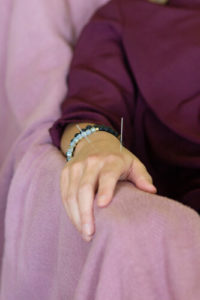 So how does sticking needles in the various points in the body actually help to alleviate back pain? The explanation according to Acupuncture theory involves the movement of stuck energy (qi) and blood in the body. Points along various energy channels are used to open pathways and redirect ‘traffic’ to promote a healthy flow of qi and blood. Western biomedical research looks at acupuncture effects on the nervous, immune and endocrine systems. It has been shown that the stimulation with acupuncture needles produces an analgesic effect through the release of endorphins, dopamine, endogenous cannabinoids (some of the body’s natural pain-killers) and anti-inflammatory substances as well as the inhibition of pro-inflammatory factors.
So how does sticking needles in the various points in the body actually help to alleviate back pain? The explanation according to Acupuncture theory involves the movement of stuck energy (qi) and blood in the body. Points along various energy channels are used to open pathways and redirect ‘traffic’ to promote a healthy flow of qi and blood. Western biomedical research looks at acupuncture effects on the nervous, immune and endocrine systems. It has been shown that the stimulation with acupuncture needles produces an analgesic effect through the release of endorphins, dopamine, endogenous cannabinoids (some of the body’s natural pain-killers) and anti-inflammatory substances as well as the inhibition of pro-inflammatory factors.
And does it last? The beneficial effects of acupuncture do, in fact. persist beyond the course of treatment. In a meta-analysis of around 18,000 patients with chronic pain, 90% of the pain-relieving effects were maintained at 1 year out.
As far as cost-effectiveness, acupuncture scores again. In one study in Canada, low back pain patients divided into 2 groups (201 patients receiving acupuncture and 804 patients not receiving acupuncture) were evaluated for the number of medical doctor visits required for treatment of their low back pain. The acupuncture patients saw their doctors 49% less after having acupuncture compared with the year prior to having acupuncture. Non-acupuncture patients had a decrease of only 2%. The WHO officially classifies acupuncture as a cost-effective treatment strategy in patients with chronic low back pain, according to their cost-effectiveness threshold values.
Back pain, as many of us have experienced, can be an expensive threat to our quality of life. Depending on the cause and severity of the back pain, acupuncture can be a safe and cost-effective alternative or complementary approach to treatment, providing much needed relief!
If you are one of the many people suffering with back pain, don’t hesitate to get in for some pain-relieving acupuncture sessions. The sooner you get in, the sooner you’ll experience the benefits!
5 Ways to Quickly Alleviate Back Pain
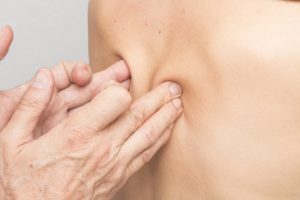 Back pain is often what leads people to their first Acupuncture experience. It’s one of the most frequent complaints heard by medical professionals in general. 80% of Americans will experience back pain at some point during their lives, and worldwide, back pain is the single leading cause of disability.
Back pain is often what leads people to their first Acupuncture experience. It’s one of the most frequent complaints heard by medical professionals in general. 80% of Americans will experience back pain at some point during their lives, and worldwide, back pain is the single leading cause of disability.
Standard modern day approaches to back pain include physical therapy, pain medication and even surgery when severe, depending on the diagnosis. Acupuncture (just one of the many tools of Chinese Medicine) is a very cost-effective pain-relief option with a low risk of negative side effects. For mild cases, Chinese Medicine offers some self-care tips to try at home.
Rest & Exercise
The proper balance of yin and yang is the central tenet of Chinese Medicine, and when it comes to back pain, either extreme can be a cause. We can develop painful stagnant energy in our bodies from a sedentary lifestyle (extreme yin). On the flip side, we can deplete our yin with too much activity (extreme yang) leaving us susceptible to injury, withered muscles, and brittle bones. Ask yourself where the balance is needed. Sometimes for mild back pain, all that’s needed is a nap or a walk.
Hot & cold
Another way to address the yin/yang balance needed for a strong, pain-free back is with applications of hot and cold. First we need to figure out if the problem is too yang (hot) or too yin (cold). Usually acute issues involve more hot inflammation (yang), in which case a cold pack (frozen peas, anyone?) can be soothing. Whereas with chronic conditions, heat is often more appropriate to open stagnant channels and encourage qi and blood flow for healing.
Acupressure
Certain points on the body help to open the channels of the low back to relieve pain and stagnation. LI 4 (Joining Valley) is located in the fleshy depression just beyond the meeting point of the thumb and first finger bones and strongly stimulates qi and blood flow throughout the body. UB40 (Supporting Middle) is at the midpoint of the crease behind the knee and opens up the main channel that runs along the back. These are great points to massage gently for both chronic and acute back pain.
Topical herbs:
Tiger balm is a popular chinese salve for topical pain relief, but another bathroom cabinet essential is Zheng Gu Shui (Evil Bone Water), an herbal liniment that can be applied directly to the skin of the low back to penetrate with blood moving, pain relieving qualities.
Qi gong
There are great (free!) instructional videos available online that demonstrate specific qi gong exercises that support the low back, such as ‘Knocking on the Door of Life’ and ‘Spinal Chord Breathing’. For beginners, just a basic qi gong stance with some breathing can start to move the stuck qi. Wu Ji posture is thought to help bring the body into proper alignment. With feet shoulder-width apart and relaxed knees, roll your pelvis in, drop the shoulders but spread them open, tuck the chin and imagine the top of the head being pulled upward. Breathe slow, smooth and deep, and empty your mind. Feel your connection to the earth through the soles of your feet where your kidney channel begins at the indent just under the balls of the feet. It can also help to get barefoot in the grass on a sunny day!. Just this practice alone (if done regularly) can also completely change your response to stress, a major factor in pain perception.
These tips can go a long way in alleviating mild back pain, but be sure to book some acupuncture sessions with Heidi to address root causes and give your body even stronger tools for rebalancing and pain relief.
